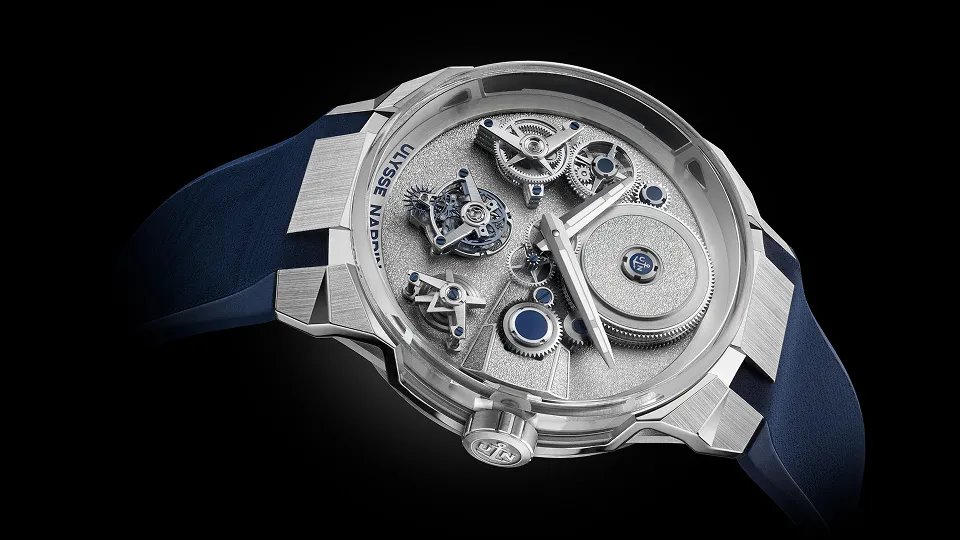
Your eye settles first on the choreography at six o’clock, where a flying tourbillon carries the brand’s Ulysse Anchor Constant Escapement – a silicon blade-spring system that evens the pulse as the mainsprings relax, an innovation that won the GPHG Tourbillon prize back in 2015. It’s theatre with intent: steadier energy delivered in full view.
At twelve, a second surprise appears as a floating twin-barrel stack, one barrel exposed, the partner working out of sight, both running on hidden ball bearings. Together they hold a week of autonomy, read at four o’clock by a graphic display whose bands thin as the reserve ebbs – a neat piece of visual language that fits the watch’s character.

Material choice matters here. The stage for all that motion is maillechort – a traditional alloy of copper, zinc and nickel prized for its warm, silvery tone and the way it develops a gentle patina with time. Ulysse Nardin uses it for the dial plate and again as a matching plate on the case back, tying front and back into one coherent object. The entire show sits inside the angular Blast case cut in white gold, its negative-angle facets catching light in alternating satin and polish. Over it all, a single-block sapphire glass box crystal is hollowed from one piece to give unobstructed sightlines from above and through the sides.
Flip to the facts and they serve the story rather than interrupt it. The hand-wound calibre UN-176 drives hours and minutes with that flying tourbillon at 2.5 Hz, running for seven days between winds. The case measures 45 mm, water-resistant to 30 meters, and comes on a blue velvet-effect rubber strap with a white-gold folding clasp – precious where it should be, practical where it helps. Limited to 50 pieces, it reads as high craft with a clear idea rather than a trophy, built for collectors who want invention they can actually see working.


.png)
.png)
.png)
.png)
